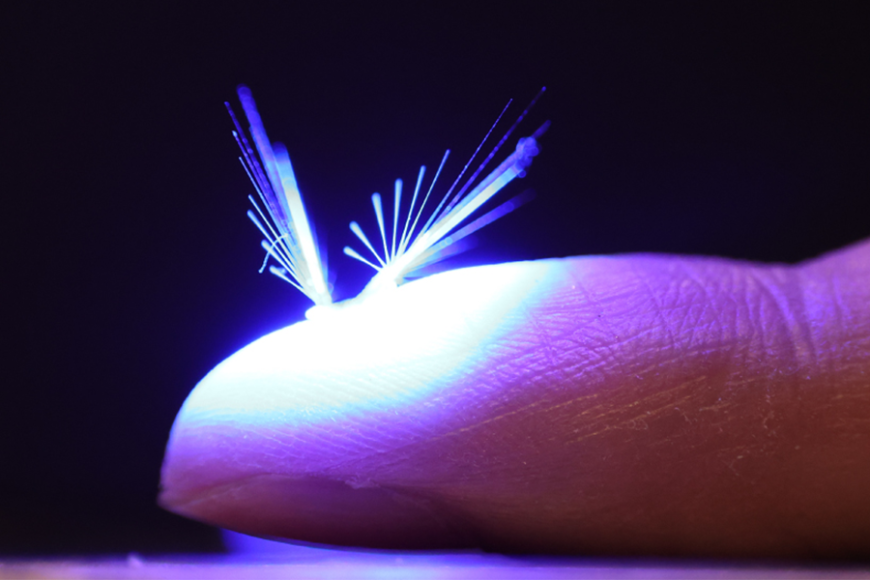Image: Photo: Jianfeng Yang / Tampere University.
In case you didn’t know: insects are dying. In, fact, researchers believe we are in the middle of an ‘insect extinction event’, with data suggesting the total mass of insects is falling by 2.5% a year, meaning they could vanish within a century. But besides them swarming around you during a picnic, insects, provide a valuable, multi-billion-dollar service: pollination. Therefore, news of a tiny, winged robot run on wind and light coming out of Tampere University have built hopes the device could pick up some of the pollinating slack!
Researchers of the Light Robots group at Tampere University are researching how to make smart material fly. Using stimuli-responsive polymers, a material that has previously brought promises for next-gen, small-scale, wirelessly controlled soft-bodied robots, engineers have used these materials to make small robots walk, swim and jump, but no one has been able to make them fly yet.
Hao Zeng, Academy Research Fellow and the group leader, and Jianfeng Yang, a doctoral researcher, however, have come up with this new design for their project that aims to change that. Called FAIRY: Flying Aero-robots based on Light Responsive Materials Assembly, the researchers have developed a polymer-assembly robot that flies by wind and is controlled by light.
“Superior to its natural counterparts, this artificial seed is equipped with a soft actuator. The actuator is made of light-responsive liquid crystalline elastomer, which induces opening or closing actions of the bristles upon visible light excitation,” explains Hao Zeng.
The responsive polymer allows the creation of artificial, autonomously operating structures. This means that light can be used to change the shape of the small fluffy ‘dandelion’ structured device to take advantage of a gust of wind to fly. The ‘fairy’ itself can then manually adapt to the direction of the wind and force by changing its shape. A light beam is used to control the take-off and landing actions of this polymer assembly, as in dark and calm weather, the fairy stays still, but when there is enough light, the structure opens.
Additionally, the artificial fairy features several biomimetic features that accommodate such flight; its high porosity (0.95) and lightweight (1.2mg) structure allow it to easily float in the air and be directed by the wind, and a stable separated vortex ring generation enables long-distance wind-assisted travelling.
“This would have a huge impact on agriculture globally since the loss of pollinators due to global warming has become a serious threat to biodiversity and food production,” Zeng says.
It’s hoped this project could see a future where millions of artificial ‘dandelion seeds’ carrying pollen could be dispersed by natural winds and then steered by light to specific areas with plants or trees awaiting pollination.
The researchers are now focusing on improving the material sensitivity to enable the device’s operation in sunlight and will up-scale the structure so that it can carry micro-electronic devices – like GPS – and biochemical compounds.
“It sounds like science fiction, but the proof-of-concept experiments included in our research show that the robot we have developed provides an important step towards realistic applications suitable for artificial pollination,” Zeng states.
But despite the promising applications, there are still issues that stand in the way of implementation. One such issue is, even if you can control it with wind and light, how can you then control the landing of this small device in a precise way? Can the devices be reused? Or if not, can they be made biodegradable?
Yet, the FAIRY project, which started September 2021, will last until August 2026, giving the team time to test, implement and refine the device.
There’s also plenty of other industry editorial at IoT Insider’s sister publication, Electronic Specifier. And you can always add to the discussion at our comments section below or on our LinkedIn page here.
